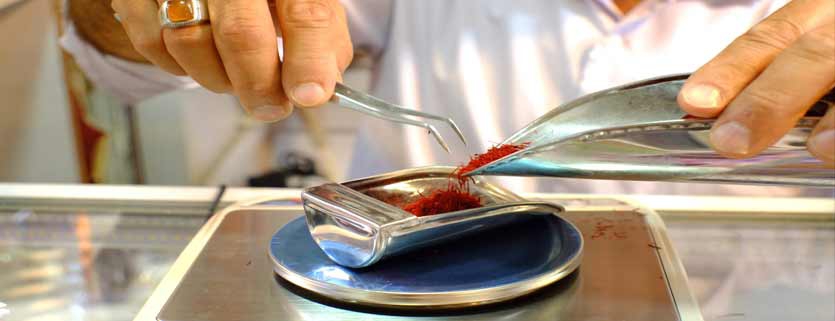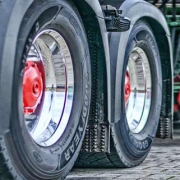Persian gas for the emerging Gulf gas market
One of the first assignments I had, when I joined the gas world, was the negotiations with Iran on gas supply for the Nabucco pipeline. I jumped right into a process that was already pretty mature but it struck me very soon that in spite of the hype around Nabucco, I had a hard time making economic sense of the project.
One of the problems I had was if I made a netback calculation on a napkin and if Iranians agreed on netback pricing, there would not be much left on the table to show as a profit if any at all. And if there is one thing that irks me, it’s the assumption that someone would want to sell anything at either no profit (at the very best) or even at loss.
Why would someone do that? Right, most people would not – except if there would have been another, more or less unrelated benefit on the table (or under it) which at the time was most certainly not the case.
So I struggled with our position and I waited for the big boom which in the end did not happen as Nabucco dissolved into thin air. But I also noticed very soon that especially our side avoided the thorny pricing subject with the Iranians like the devil avoids holy water. That was more than understandable given the deck of cards we had.
Let’s take a peek at the fundamentals. Most of the Iranian gas is located in and south of the Persian Gulf (Arabic Gulf for Arab readers). This means that any gas wanting to go Europe would have to cross a hefty portion of Iran itself in order to join the Turkish border. Arriving there the gas would have traveled around 1700 km. As we well know, this comes at a cost. Our own side did not consider those costs as their purchase obligation started at the Turkish border but the Iranians sure had it in their internal economic model.
Then the gas had to continue all through Turkey from the extreme East to the extreme West. I forgot to mention that the terrain in Iran and in Turkey is not exactly Central European plains or lowlands but rather very mountainous and difficult for a very long stretch.
Let’s continue on the way because if the gas is meant to hit an economically interesting European market, it would have to travel either to Austria or to Italy. If we stick with Baumgarten as the original Nabucco plan supposed, we would have looked at 5000 km of gas transport in steel tubes. Hardly a recipe for cheapness.
It is generally assumed that gas pipelines become more expensive than LNG after 3000 km. this, however, assumes that the pipeline is onshore and that the terrain is not challenging which means no mountains, no dense agglomerations to traverse, not many rivers to cross. Essentially, you dig a trench and put the tube in.
A Nabucco style pipeline would have to cross many hundreds of km of mountains, go offshore for a short stretch at a pretty densely populated spot and it’s with 5000 km almost double the length said to be the threshold. And if this was not expensive enough already, there are multiple countries on the way which all want to be paid for the right to be crossed.
Chances are that even if Iran did not seek to cut any profit on the gas itself, the resulting gas would be too expensive for liberalized European markets. But if the sellers of the gas cannot cut a decent profit, why on earth would they want to sell it in the first place. For convenience, I will leave out possible political reasons to do so.
But there is a real gas market springing up right at Iran’s doorstep and this market would be well placed to replace far away Europeans as customers.
Countries like the United Arab Emirates, Kuwait or even Saudi Arabia are running out of Natural Gas. They need prodigious amounts if it and can’t seem to produce the volumes required anymore so some of them already turn to LNG imports. This also means that they are ready to pay international price levels and this should be interesting to Iran.
Laying a gas pipeline to any Gulf country should be extremely easy and comparatively cheap. And it would be a rather short tube. Plus, there are no squeamish transfer countries on the way extracting their toll. Seeing what happens in Ukraine today just highlights the importance of controlling one’s fate.
Put together, this is an economically much more appealing option for Iran to sell its gas to. Less cost on the way, prices comparable to Europe and a market that will gladly take all the volumes it can lay its hands on.
There once were talks about the Persian Gulf gas roundabout. The idea is a great one – to connect all the isolated gas pipeline infrastructures in the Persian Gulf and hence create a single market for pipeline gas. Iran controls all the Eastern half of the Persian Gulf shoreline and would also be one of the biggest contributors of volumes into such a system. Its weight would be undeniable.
Establishing such a system would also lay the foundation for a Gulf Gas Market and – dare I say – establish a Persian Gulf gas hub with a traded and tradable gas price for the entire region. We could call it GBP for Gulf Balancing Point.
But names do not matter much. What matters is giving gas producers a possibility to work with the market at their doorstep rather than with the market around the world. Close relations in Steel and Coal production have helped to cement the realignment of German and French interests which in the end led to the establishment of the European Union.
It is also no secret that states that interdepend from each other will develop much more moderate relations with each other. Iran would rival Qatar’s role of supplier of last resort and also develop close ties with Saudi Arabia as they would become their customers. Do you need proof? The lukewarm reaction of the EU towards Russia’s land grab is proof enough. I would believe that the response from Europe would be much more muscular if they did not depend on Russian energy supplies.
Iran would be well advised if it concentrated on delivering gas to its backyard. And their Arab neighbors would be well advised to take it.















Leave a Reply
Want to join the discussion?Feel free to contribute!